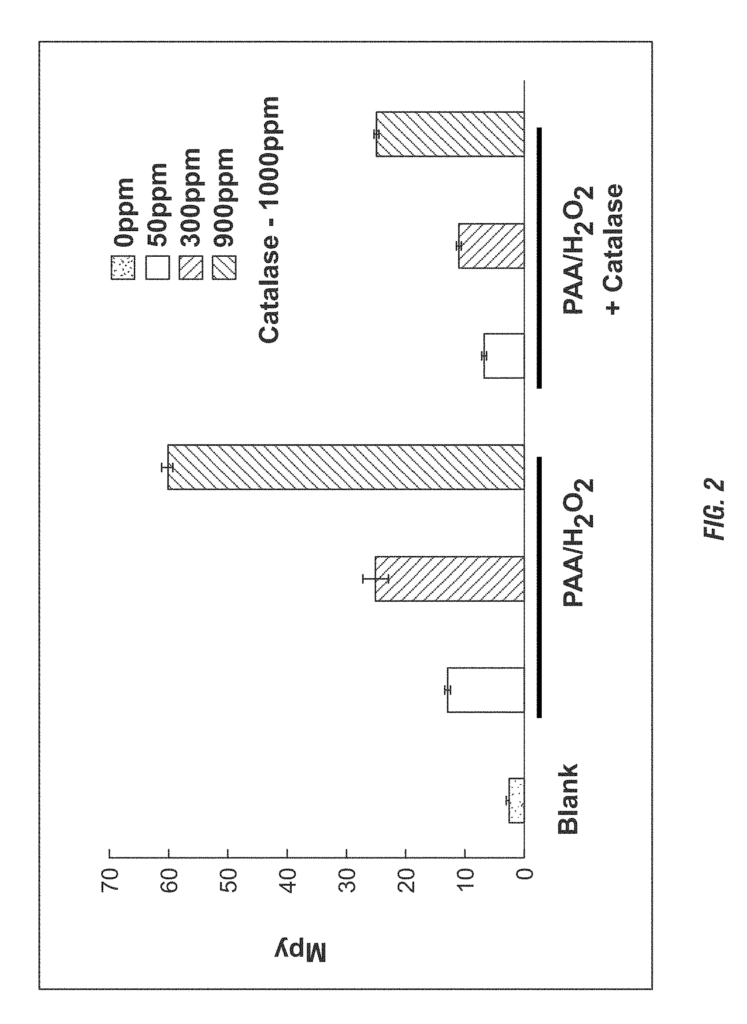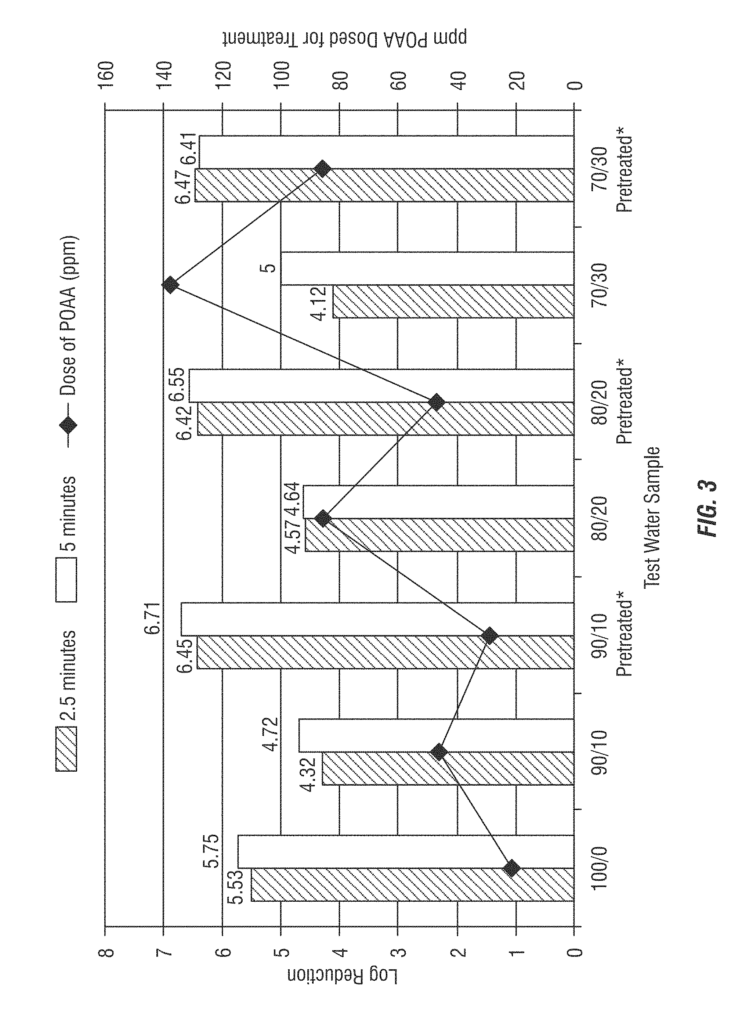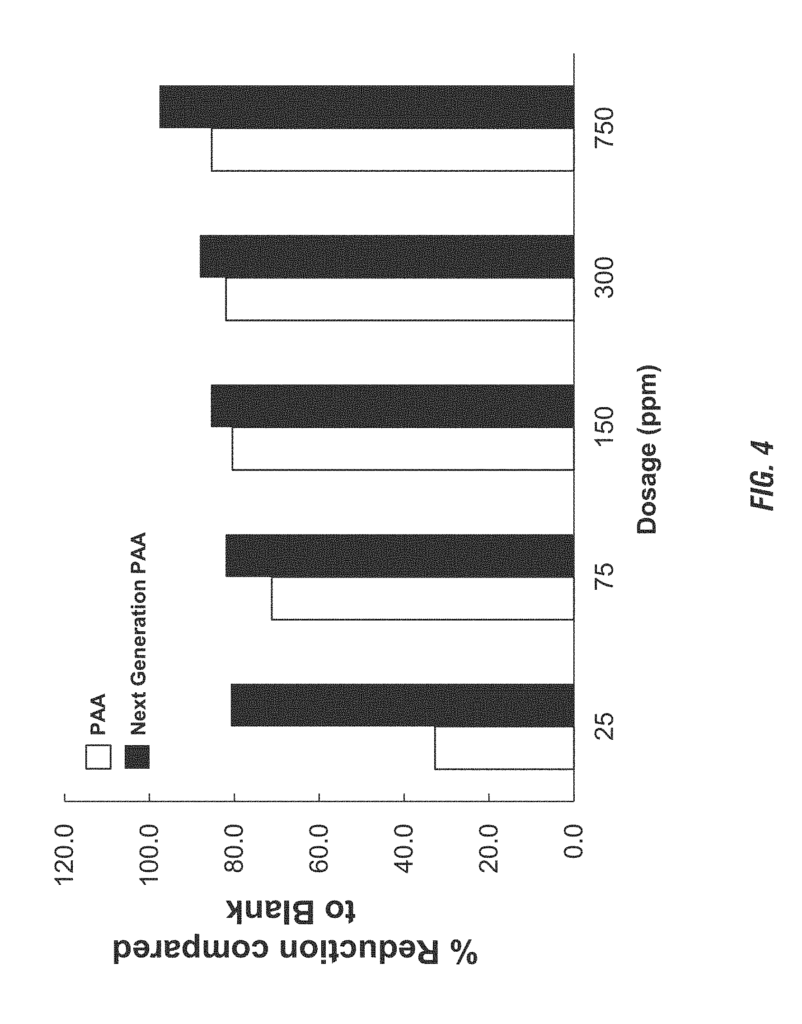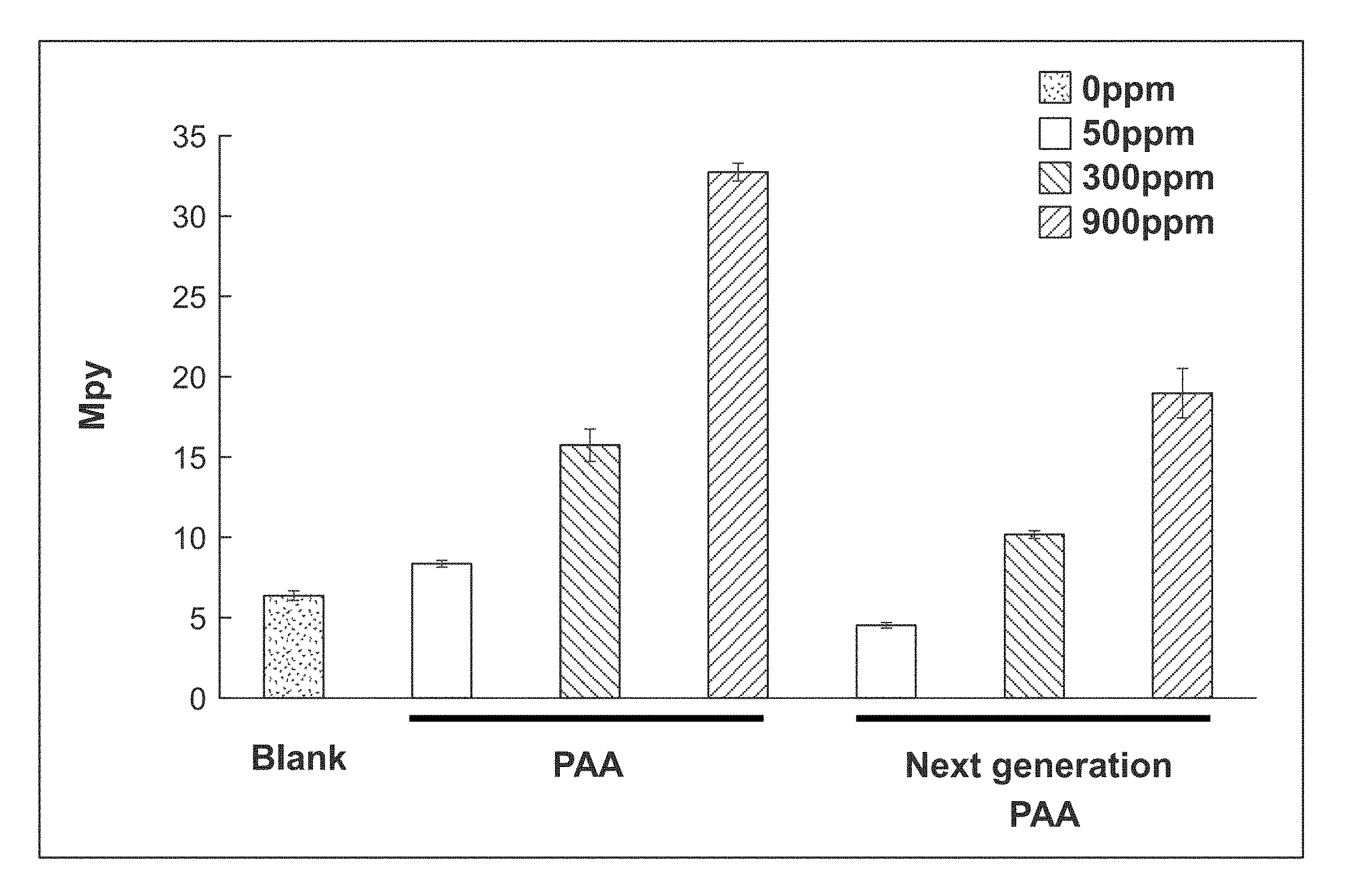Invented by Victor Keasler, Renato De Paula, Junzhong Li, David D. McSherry, Brandon Herdt, Richard Staub, Robert J. Ryther, Ecolab USA Inc
Peracetic acid and hydrogen peroxide are powerful oxidizing agents that are commonly used in the oil and gas industry for the treatment of drilling fluids and frac fluids. They are effective at breaking down organic compounds and reducing the amount of harmful chemicals in the fluids. Peroxide reducing agents are used to neutralize the peracetic acid and hydrogen peroxide after they have done their job, preventing any negative environmental impacts.
The market for these products is growing rapidly as more and more companies in the oil and gas industry recognize the importance of proper fluid management. The use of peracetic acid and hydrogen peroxide can help to reduce the environmental impact of drilling and fracking by reducing the amount of harmful chemicals that are released into the environment. This is particularly important in areas where water sources are scarce or where there are sensitive ecosystems that could be negatively impacted by the chemicals used in the drilling process.
In addition to their environmental benefits, peracetic acid and hydrogen peroxide are also cost-effective solutions for fluid treatment. They are easy to use and can be applied directly to the fluids, reducing the need for expensive equipment or complicated processes. This makes them an attractive option for companies looking to reduce costs while also improving their environmental performance.
Overall, the market for use peracetic acid/hydrogen peroxide and peroxide reducing agents for the treatment of drilling fluids and frac fluids is a growing and important market in the oil and gas industry. As companies continue to focus on sustainability and environmental responsibility, these products will play an increasingly important role in ensuring that drilling and fracking are done in a safe and responsible manner.

The Ecolab USA Inc invention works as follows
The disclosures include “methods for using peracid compositions with a reduced hydrogen peroxide content and a UV blocking agent for water treatment, oil and gas field operations, or other aseptic treatments.” Peracetic acid, which is often the preferred peracid, is treated with peroxide-reducing agents to reduce hydrogen peroxide. The compositions are used to treat drilling fluids and frac fluids as well as flow back water and disposal waters. They can also be used for improving the condition of the water, reducing hydrogen peroxide damage and/or reducing bacteria.

Background for Use peracetic acid/hydrogenperoxide and peroxide reducing agents for the treatment of drilling fluids and frac fluids as well as flowback water and disposal waters
Peroxycarboxylic Acids (also known as peracids) and mixed peroxycarboxylic systems are used as antimicrobials, bleaching agents, in many industries. In the food and beverage industry, peracetic or peroxyacetic acids (PAA or AA) (dynamic balance mixture of POAA/PAA and H2O2, AA and H2O) are used as a “green” and fast-acting antimicrobial. antimicrobial. These products have beneficial properties for oxidizing and improving water. Peracetic acid has a lower environmental impact than other biocides available commercially, in part due to its decomposition to innocuous components. Acetic acid (AA), CO2, H2O, and oxygen. U.S. Pat. No. No. 8,226,939 entitled “Antimicrobial peracid compositions with selected catalase enzymes and methods of use in aseptic packaging” is incorporated by reference. This entire patent is incorporated in its entirety by reference.
Peracids are also used in certain water treatment applications. These have only been used in very small quantities for commercial well drilling operations. U.S. Patent Publication No. See for example U.S. Patent Publication No. 2010/0160449 entitled “Peracetic Acid Oil Field Biocide and method” Patent No. No. No. Peracids can be used in certain water treatment applications, but they may not be suitable for all oil and gas production steps. Peracetic acid is one of the limitations of using peracids in water treatment, despite their fast action and environmentally friendly properties. Peracetic acid in high dosages can cause corrosion in equipment and pipelines due to hydrogen peroxide. The peracids/H2O2 may also interfere with the effectiveness of the functional agents that are used in the oil and gas recovery methods, such as friction reducers, thickeners, and other additives. These can be critical to the fracking procedure. Peracids, and hydrogen peroxide, are susceptible to being quenched by common, natural chemicals, which can limit their usefulness.
There is still a need for improved water treatment methods.” For example, from a microbiology perspective, mitigation of microorganisms is essential to minimize environmental concerns for waste products and to avoid contamination of systems, such as well or reservoir souring and/or microbiologically-influenced corrosion (MIC). Prior to drilling and fracking, water is treated in order to limit the introduction of microbes to the reservoir or well. It also prevents microbes having a negative impact on the fluids. Before disposal, the flow-back water must also be treated in order to comply with environmental regulations stipulated by regulatory bodies.
The invention aims to replace the conventional oxidizing biocides used in water treatment, such as hypochlorite, hypochlorous or equilibrium peracetic acids, and/or chloride dioxide compositions.
It is also a further goal of the invention to provide effective antimicrobial efficacy in water treatment for oil and gas recoveries without any detrimental interaction with functional agents such as friction reducers or viscosity enhancements.
The invention also aims to improve stability and antimicrobial efficacy by using peracids, compositions, and perhydrolysis, preferably with a strong oxidizer or metal, as well as peroxide-reducing agents.
The invention also aims to create methods that use peracids to treat water for drilling, fracking and disposal. This will result in water with fewer microorganisms.
Another objective of the invention is compositions and methods that use peracids (namely peracetic acids) with a peroxide reducing agent such as a strong oxidizer or metal to reduce H2O2 to minimize negative effects from H2O2.
The invention is used to minimize and/or eliminate the negative effects caused by UV (e.g. The use of sunlight in the treatment water for drilling or fracking, which employs peroxide-reducing enzymatic agents.
The following description, taken together with the accompanying illustrations, will reveal other objects and advantages of the invention.

The present invention is a method for treating water that includes: (a), treating a percarboxylic-acid composition with a hydrogen-peroxide reducing agent to produce an antimicrobial formulation; (b), providing the antimicrobial-acid composition to a source of water in need of treatment, to form a “treated water source”, wherein (i) the antimicrobial-acid composition and/or treated water sources further comprise a UV blocking agent, and the treated source contains (i) up to 1000 ppm) (i) (i) (i) (i) (i) (i) (i) (i) (i) (i) (a) (i) (i) (i) (b) (b) (b) (b) (b) (b) (b) (b) (b) (b) (i) (b) (ii) (iiiiiiiiiiiiiii
The present invention also provides a method for treating water sources, which comprises adding a percarboxylic and peroxide-reducing agent to the water to produce a treated source with a hydrogen-peroxide to peracid ration of about 0:100 up to about 1:10, and wherein the antimicrobial composition used in the use solution of the treated water contains (i) less that about 1000 ppm catalase, (ii), from about 0.0% to 1 wt% hydrogen peroxid The treated water source also reduces corrosion due to hydrogen peroxide, as well as microbial corrosion.
The inclusion of UV-blocking agents further increases the effectiveness of peroxide-reducing enzymatic compounds, including catalases. These enzymes are especially effective in decomposing hydrogen peroxide from peracid formulations, and are used particularly in peracid preparations for water treatment in oil and gas recovery.
The use of compositions or methods that reduce the amount of hydrogen peroxide in the peracid provide unexpected benefits to the stability of the biocide oxidizers (and, as a result, an unexpected benefit in their efficacy). The reduced oxygen in the peracid composition, on the other hand, does not interact negatively with functional agents such as friction reducers and offers a variety of benefits to be used for industrial applications or various aseptic treatments.
The following detailed description will show and describe illustrative examples of the invention. The drawings and detailed descriptions are therefore to be considered as illustrative and not restrictive.
BRIEF DESCRIPTION DES DRAWINGS
FIGS. “FIGS.1-2” show a particular embodiment of the invention in which the use of peracid combined with catalase reduces the corrosion rate of carbon steel.
FIG. “FIG.
FIG. “FIG.
FIG. “FIG.

FIG. “FIG.

Click here to view the patent on Google Patents.

Leave a Reply